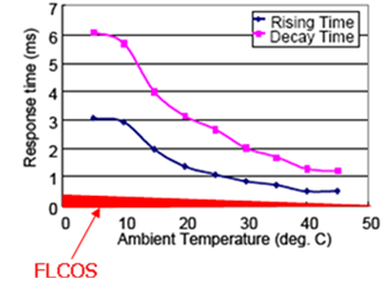Not quite sure how I feel about the controls, though. You're steering the bird with your head movements only (I'd have prefered regular controls + free head movement).
That's exacly the kind of thing that is recipe for motion sickness.
Follow along with the video below to see how to install our site as a web app on your home screen.
Note: This feature may not be available in some browsers.
Not quite sure how I feel about the controls, though. You're steering the bird with your head movements only (I'd have prefered regular controls + free head movement).
Remember that the displays for VR have a need for very brief image persistence to avoid motion artifacts on the retina, and preferably a global update to ensure that for the ~2ms that the frame is actually visible you have a complete static image that's not exhibiting any scan-out induced oddities.
successive colors can be only hundreds microseconds apart.
Can be or are? I haven't seen any lcos parts that cite >1 kHz internal refresh rates, granted I haven't been looking very hard in the past couple years after VR HMD research shifted from LCoS to OLED.
So apparently Magic Leap uses FLCOS microdisplay and supposedly temporal color.
http://www.businessinsider.com/magic-leap-could-launch-product-in-2017-2016-10
Himax is FLCOS manufacturer , and there is also:a micro projector from Himax that costs about $35 to $45 per unit.

I don't think there are any games rendering below 960+1080 per eye at this point, including Driveclub. It's just that in Driveclub, you're naturally focusing on far away points on the road. In most other games you're meant to look at nearby details. The cockpits look marvelous and relatively clean, whereas the road in front of you gets hit hard by the low pixel density of the HMD. There's various methods of anti-aliasing, though. In the case of Windlands and Playroom VR, possibly super-sampling. Windlands in particular reaps tremendous dividends from its pristine image quality as it's another game where details in the distance actually matter.
Robinson looks very clean running on stock first gen PS4 hardware as well, by the way.
Similarly, those of you who have PS VR hooked up to your PS4 Pro might notice Area X looking a little different than you’re used to—that’s because the image being passed along to each of your eyes is being rendered at a higher resolution (1920 x 1080, instead of 1440 x 810 on a standard PS4), before being passed to the PS VR headset.
Rez Infinite is apparently using sub-1080P on a standard PS4.
http://blog.us.playstation.com/2016/11/07/how-rez-infinite-shines-brighter-than-ever-on-ps4-pro/
That's exacly the kind of thing that is recipe for motion sickness.
I'm pretty sure there must be more titles that are sub native. I haven't kept track of that though. And then some titles apparently use lower resolution in the periphery already as at least one game mentions they will not to that on Pro.
- the weird and jarring resolution change
- the shitty drift
- the gamepad that often goes inverted (easily fixed by banging the gamepad to your other hand like mad).
- the super hard to do "light calibration"
- no 3D support despite the headset itself can do it just fine via HDMI to android phone or PC or laptop.
At least in my case, the shitty drift went away completely once I sat down within the recommended range from the camera, i.e. between 1.5 and 2 meters.
